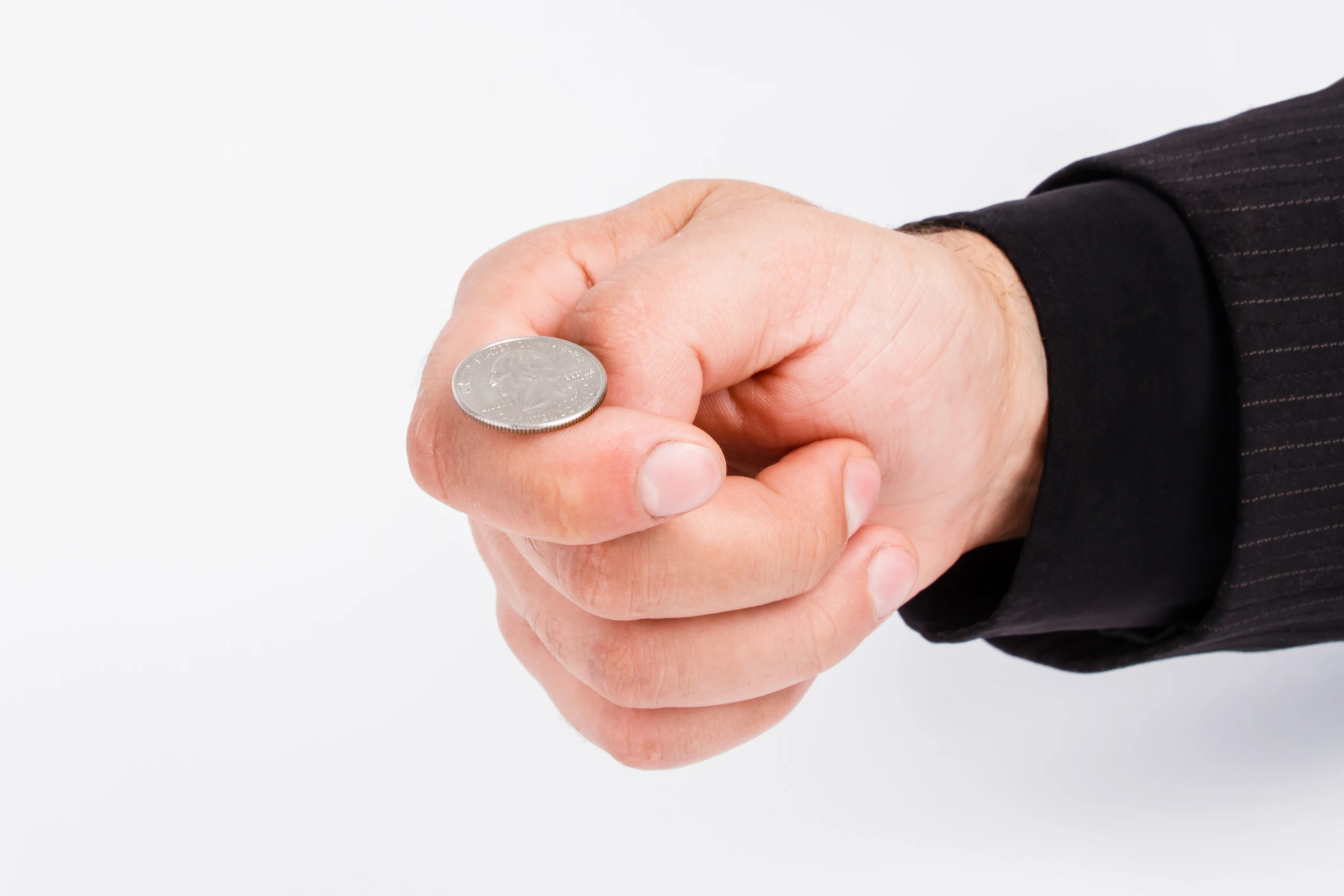It’s generally thought flipping a coin is a quick and fair way to settle random disputes. Someone calls heads or tails as a coin is flipped, offering 50/50 odds it will land on either side. But what if the chances of heads or tails aren’t even? A team of 48 researchers in Amsterdam spent days flipping coins and discovered the results of this game of random chance may not be as random as most assume.
In the early 2000s a trio of US mathematicians led by Persi Diaconis created a coin-flipping machine to investigate a hypothesis. They believed coin flipping was far from random. Instead, it was argued coin flipping was a matter of physics, and with a few small tweaks a seemingly random process could lead to 100% predictable results.
Of course, human hands are not like machines but the research ultimately suggested most people will slightly privilege the side of a coin facing up when it is flipped. Those with a significant same-side bias were dubbed 'wobbly tossers.' It was calculated that, in general, a coin is 51% likely to land the side facing up at the time of flipping.
In order to empirically test that hypothesis a group of researchers from the University of Amsterdam set out to flip a mind-numbing amount of coins. Over many days, 48 different people flipped 46 different coins. In the end the researchers accumulated 350,757 coin flips.
“We found overwhelming evidence for a 'same-side' bias predicted by Diaconis and colleagues in 2007,” explained Frantisek Bartos, one of the lead researchers. “If you start heads-up, the coin is more likely to land heads-up and vice versa. How large is the bias? In our sample, the mean estimate is 50.8%, CI [50.6%, 50.9%]”
We found overwhelming evidence for a "same-side" bias predicted by Diaconis and colleagues in 2007: If you start heads-up, the coin is more likely to land heads-up and vice versa. How large is the bias? In our sample, the mean estimate is 50.8%, CI [50.6%, 50.9%]. pic.twitter.com/jmeHBHgkac
— František Bartoš (@BartosFra) October 9, 2023
Perhaps most striking were the variations in same-side bias between the different coin tossers. Only 10 of the 48 participants were less than 50% likely to preference the side facing down. The rest of the cohort favored the side facing up, with some of the 'wobbliest' tossers landing on the same side nearly 60% of the time.
But does this same-side bias actually mean anything in the real world of coin flipping?
Not really, according to Stephen Woodcock, from the School of Mathematical and Physical Sciences at the University of Technology Sydney. Woodcock, who did not work on the new research. He says the magnitude of the effect size noted in the study is so tiny it would barely make a difference in any actual coin flip scenario.
“Without wishing to become too esoteric, some of this is almost a philosophical question of what randomness is,” Woodcock explained in an email to New Atlas. “Even if there is a small effect (and let’s be honest here – even off their huge sample of over 350,000 flips, an observed bias of 50.8% vs 49.2% is only 8 more face-up results per thousand flips than would be expected from a true 50/50 split), would this mean anything in the real world? Most times a coin is flipped, the flipper doesn’t deliberately place the coin on the thumb one way or the other. This in itself is a very strong form of randomization which is not considered in this study.”
Woodcock also points to a 2009 study that questioned how random a coin toss is in the first place. That research challenged 13 subjects to flip as many heads as they could. Each subject could easily, and subtly, manipulate a coin toss to preference heads over tails in a majority of flips.
Those 2009 findings lead one to question whether the participants in this latest research could have, consciously or unconsciously, manipulated the results to preference flips that land the same side up. In the preprint article, Bartos and colleagues do call this a “legitimate concern” as all participants were aware of the hypothesis being tested.
“... it cannot be excluded that some of the participants were able to manipulate the coin flip outcomes in order to produce the same-side bias,” the researchers write. “In light of the nature of the coin tossing process, the evidence from the video recordings, and the precise correspondence between the data and the predictions from D-H-M model, we deem this possibility as unlikely; future work is needed to disprove it conclusively.”
In the end, Bartos and colleagues do conclude that in matters of high stakes decision making it is probably best for a coin flipper to conceal the starting position of the coin. However, from Woodcock’s perspective most real-world coin flipping scenarios don’t offer an opportunity to observe or change a coin’s starting position, making these minor findings relatively meaningless for day-to-day life.
“I’m a qualified football referee and I can honestly say that I have never once even noticed whether I placed the coin heads-up or heads-down on my thumb before flipping,” noted Woodcock, “In reality, I would never know its starting position, so it likely is effectively 50/50 from a more realistic model of how people behave.”
The new research has been posted on preprint server Arxiv.




